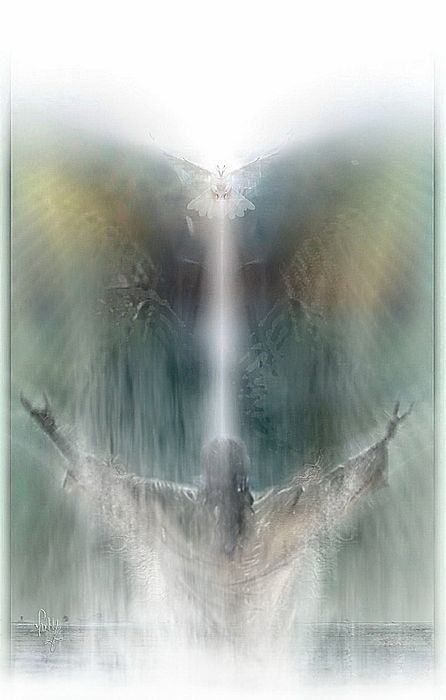Eunice
Then came [Paul] to Derbe and Lystra: and, behold, a certain disciple was there, named Timotheus, the son of a certain woman, which was a Jewess, and believed; but his father was a Greek: Which was well reported of by the brethren that were at Lystra and Iconium. Him would Paul have to go forth with him...And as they went through the cities, they delivered them the decrees for to keep, that were ordained of the apostles and elders which were at Jerusalem. And so were the churches established in the faith, and increased in number daily. Acts 16:1-5
When I call to remembrance the unfeigned faith that is in thee, which dwelt first in thy grandmother Lois, and thy mother Eunice; and I am persuaded that in thee also. 2 Timothy 1:5
THE STORY IN THE PAINTING
This painting depicts Eunice, the mother of the New Testament disciple, Timothy, a Jewess who believed in Christ (see Acts 16:1) and nurtured her son in that faith. Eunice is extolled, along with Timonthy's grandmother, Lois, as a mother possessing "unfeigned faith" (2 Timothy 1:5). It is this faith which Eunice passes on and first "established" (see Acts 16:5) in Timothy, thus laying the foundation for her son and any blessed through his own missionary efforts, to "[fight] a good fight...[finish the] course..[and keep] the faith" (2 Timothy 4:7). Likewise all righteous women who strengthen their familiies and raise children in the faith leave indellible legacies of faith for all generations to follow.
Eunice is an example of of parents who teach their children to understand the doctrine of repentance, faith in Christ the Son of the living God...baptism and the gift of the Holy Ghost by the laying on of hands...to pray, and to walk uprightly before the Lord. Such mothers and fathers establish the foundations of faith in their children, allowing faithful leaders, like the Apostle Paul, to build on the testimonies they planted in the home. Such foundations also enable their posterity to "be not...ashamed of the testimony of our Lord" (2 Timothy 1:8), and to "Hold fast...in faith and love which is in Christ Jesus" (2 Timothy 1:13).
Eunice was able to engender this reliance on and trust in Christ "in" her son (see 2 Timothy 1:5), despite the "wholly Gentile and pagan culture" in which her homeland was steeped and a husband who, presumably, did not share her faith (see Acts 16:1). This remarkable mother's "unfeigned faith" nurtured her child to become what one Bible Dictionary describes as "Paul's most trusted and capable assistant"
The fact that Eunice's faith enabled her to raise her son in such protective righteousness gives hope to each of us that, amidst the backdrop of secularism and aethism in which we find ourselves, we too can raise a posterity who is true to the faith.
SYMBOLISM OR SIGNIFICANT ELEMENTS IN THE PAINTING
Eunice's home, Lystra, was a city within a Roman colony in present-day Turkey; one in which, according to one Biblical scholar, "Paul was unable to assume that his audience had any knowledge of the true God" (Zondervan 332). Within this painting, Eunice is, therefore, compositionally surrounded by architectural elements which represent her culture. The seemingly informidable stone architecture is a visual reminder of the political, social, and religious circumstances in which she would have to endeavor to raise a righteous family.
Symbolically, the only pure light visible in the image is found touching her person. It does not extend to the elements represnting the culture of the world. The brilliant white hightlights bathing her hair in beauty represents the light with which faith in Christ bathes the possessor of it. It is this light which enlivens her being, just as the light of Christ enlivens all who have their eye on Gods' glory.
The color of the Roman-style "palla" draped about her shoulders was produced anciently by using a dye extracted from the madder root. Here, this reddish color is intended to remind the viewer of the atoning blood of Christ, which enables those obedient to His commandments to be clothed with purity, even with the robe of righteousness, even when he or she may be surrounded by the threatening influences of the world. The gold embroidery visible on her palla was fashionable in Rome prior to Eunice's day.by Elspeth Young









